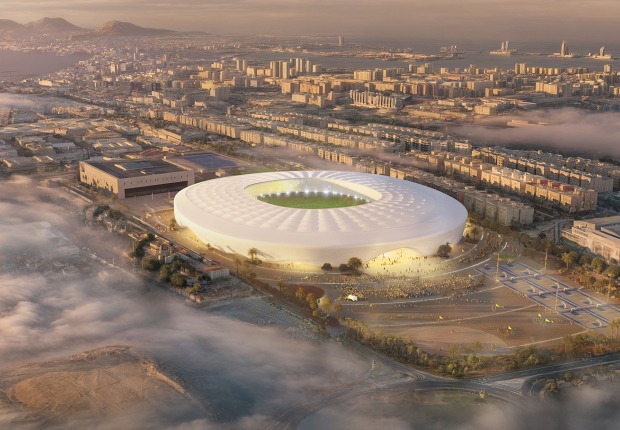Descripción del proyecto por Kengo Kuma
Our intention is to make a multifunctional box that will provide protection from the din and bustle of Shanghai. As a countermeasure to the physical noise, louvers facing the street are arranged around a plant box made of mirror-finish stainless steel. They act as a filter between the building and the noise. A garden is placed between this filter and the main body of the building, and the building façade which faces the water garden comprises ribbed glass with water flowing cross it. The building is thereby protected by a triple filter. The building façade is composed of natural elements such as ivy, a pond, a waterfall. So-called artificial materials are made as invisible as possible. By escaping the noise of culture, the tradition of Chinese citizens living surrounded by nature is here transformed into architecture.
The intensity of Zhongtai Box, known as the Z58, goes beyond that very first green facade. That horizontally striped sight is only the first out of three filters in between which the architectural experience takes place. An exercise of dissolution of shape in favour of the spacial experience, that will not leave you indifferent.
Architecture like music.'Because music doesn't have a physical form, but it molds time', Kengo Kuma says when explaining the building. And he sais so because Z58 is a perfect example of architecture that wants to dissolve its shape in favour of an spacial experience: Consisting on a series of filters which insinuate rather than showing, the different environments appear. The building, which is Kuma's second project in China, is the window of Zhongtai Lighting Group and was actually a renovation of an old factory which serves as an scaffold. The use of water as well as the striped facade to isolate the artificial watery landscape created inside, serve as an interpretation of the 'traditional Chinese humanistic spirit with a living nature which is away from the city', Kuma adds.
More information
Published on:
October 20, 2016
Cite:
"A green brise-soleil against pollution: Z58 by Kengo Kuma" METALOCUS.
Accessed
<https://www.metalocus.es/en/news/a-green-brise-soleil-against-pollution-z58-kengo-kuma>
ISSN 1139-6415
Loading content ...
Loading content ...
Loading content ...
Loading content ...
Loading content ...
Loading content ...
Loading content ...
Loading content ...
Loading content ...
Loading content ...
Loading content ...
Loading content ...
Loading content ...
Loading content ...
Loading content ...
Loading content ...
Loading content ...
Loading content ...
Loading content ...
Loading content ...
Loading content ...
Loading content ...
Loading content ...
Loading content ...
Loading content ...
Loading content ...
Loading content ...
Loading content ...
Loading content ...
Loading content ...
Loading content ...
Loading content ...
Loading content ...
Loading content ...
Loading content ...
Loading content ...
Loading content ...
Loading content ...
Loading content ...
Loading content ...
Loading content ...
Loading content ...
Loading content ...
Loading content ...
Loading content ...
Loading content ...
Loading content ...
Loading content ...
Loading content ...
Loading content ...
Loading content ...
Loading content ...
Loading content ...
Loading content ...

















































